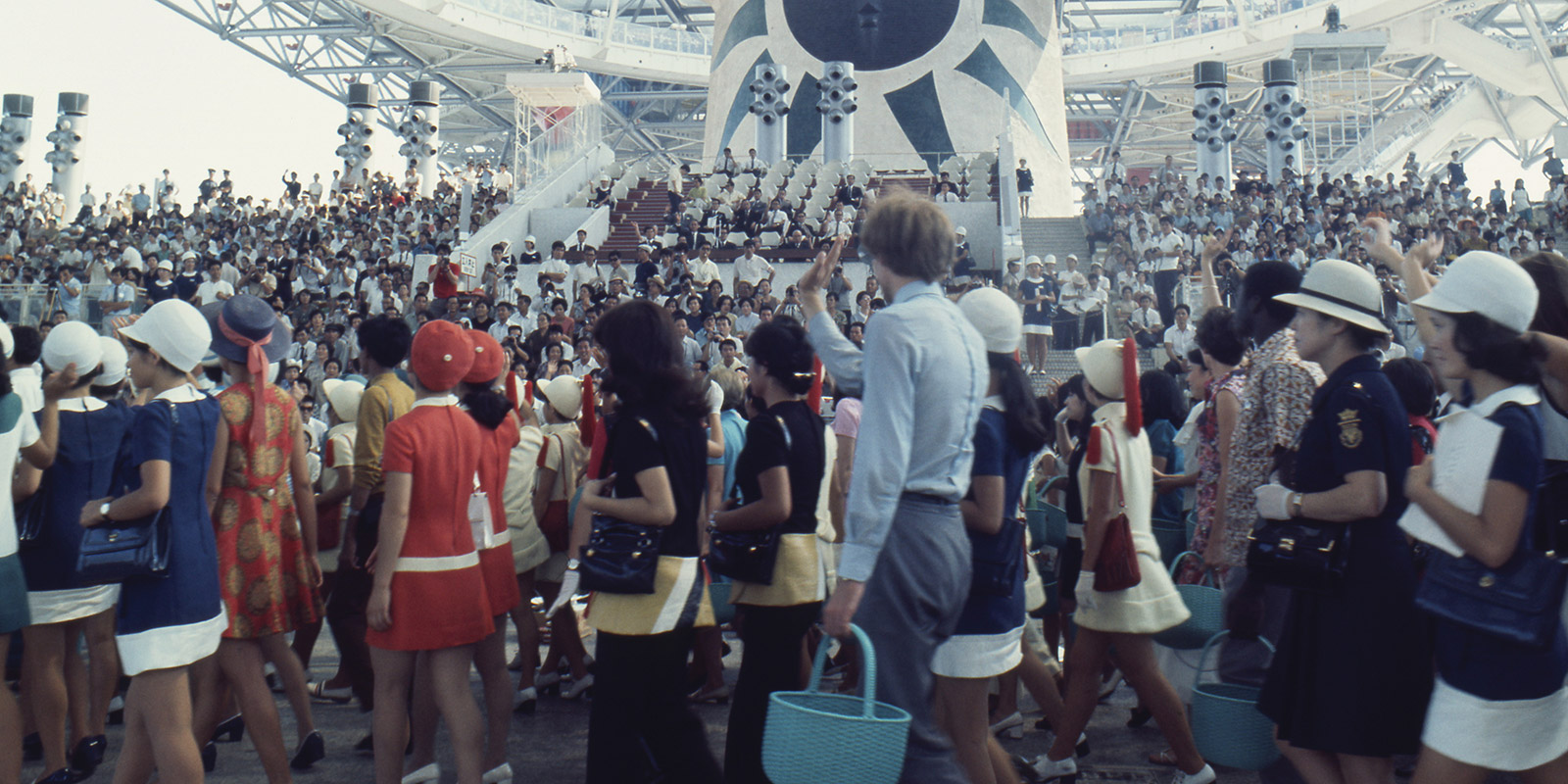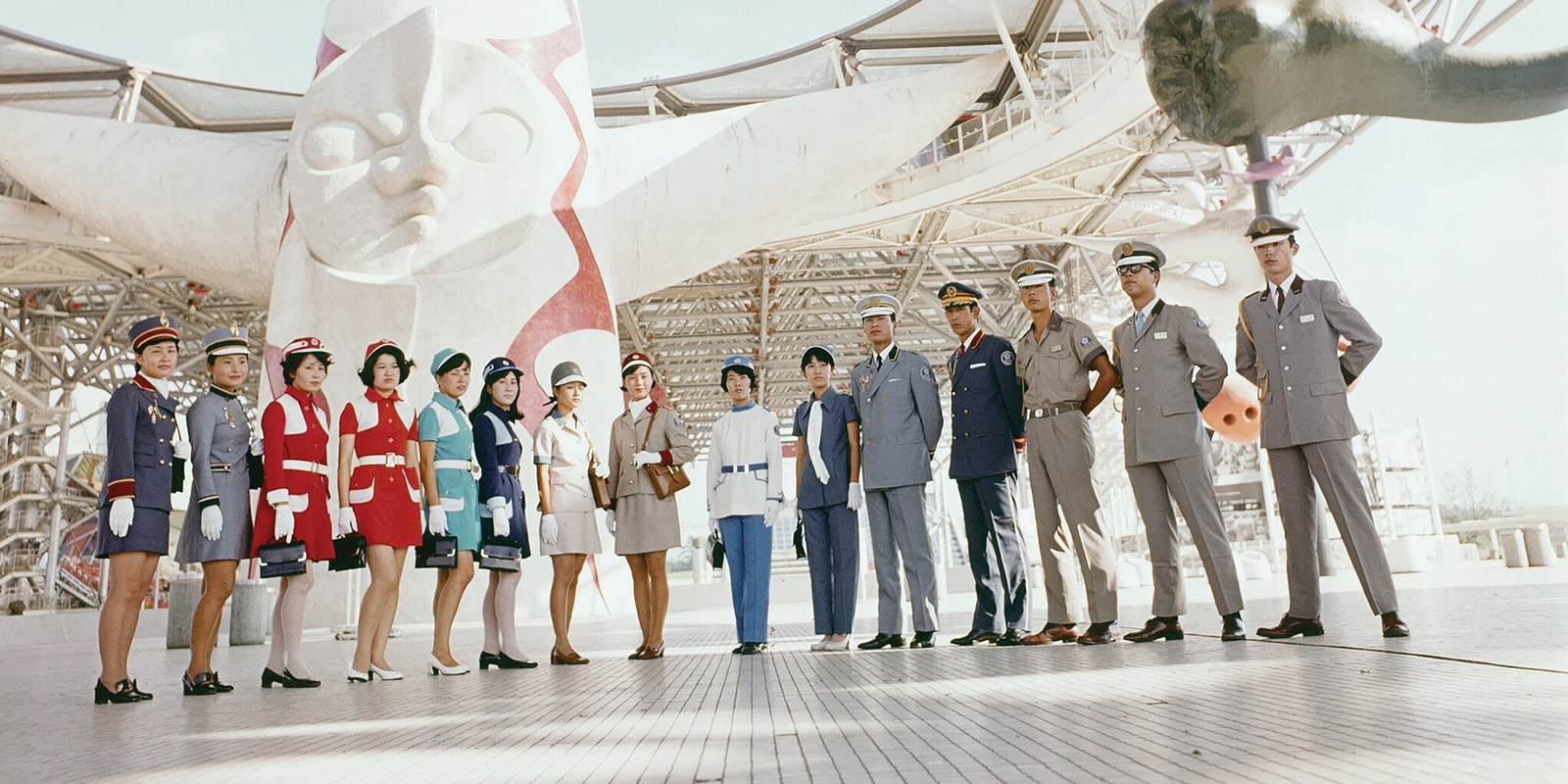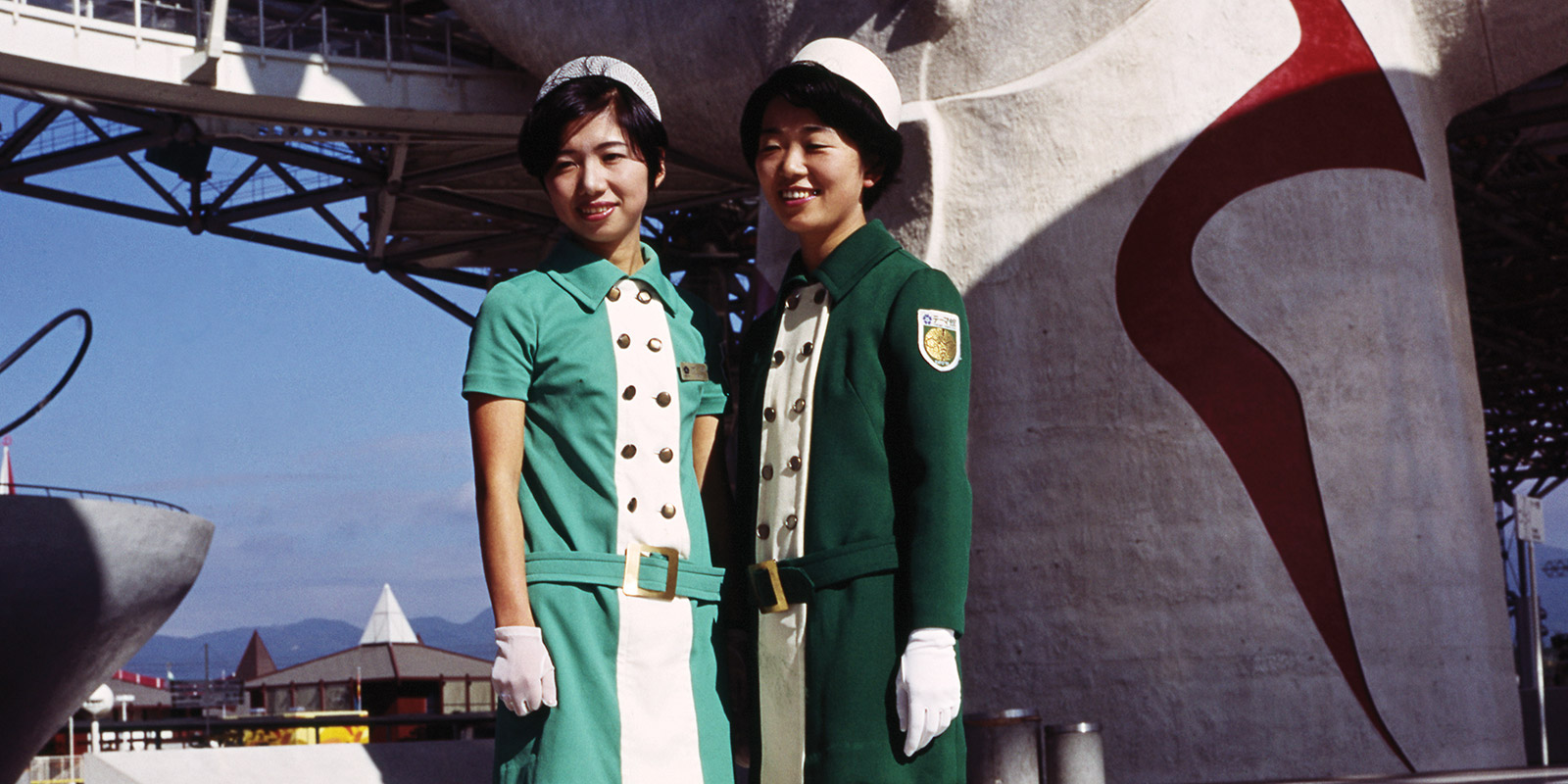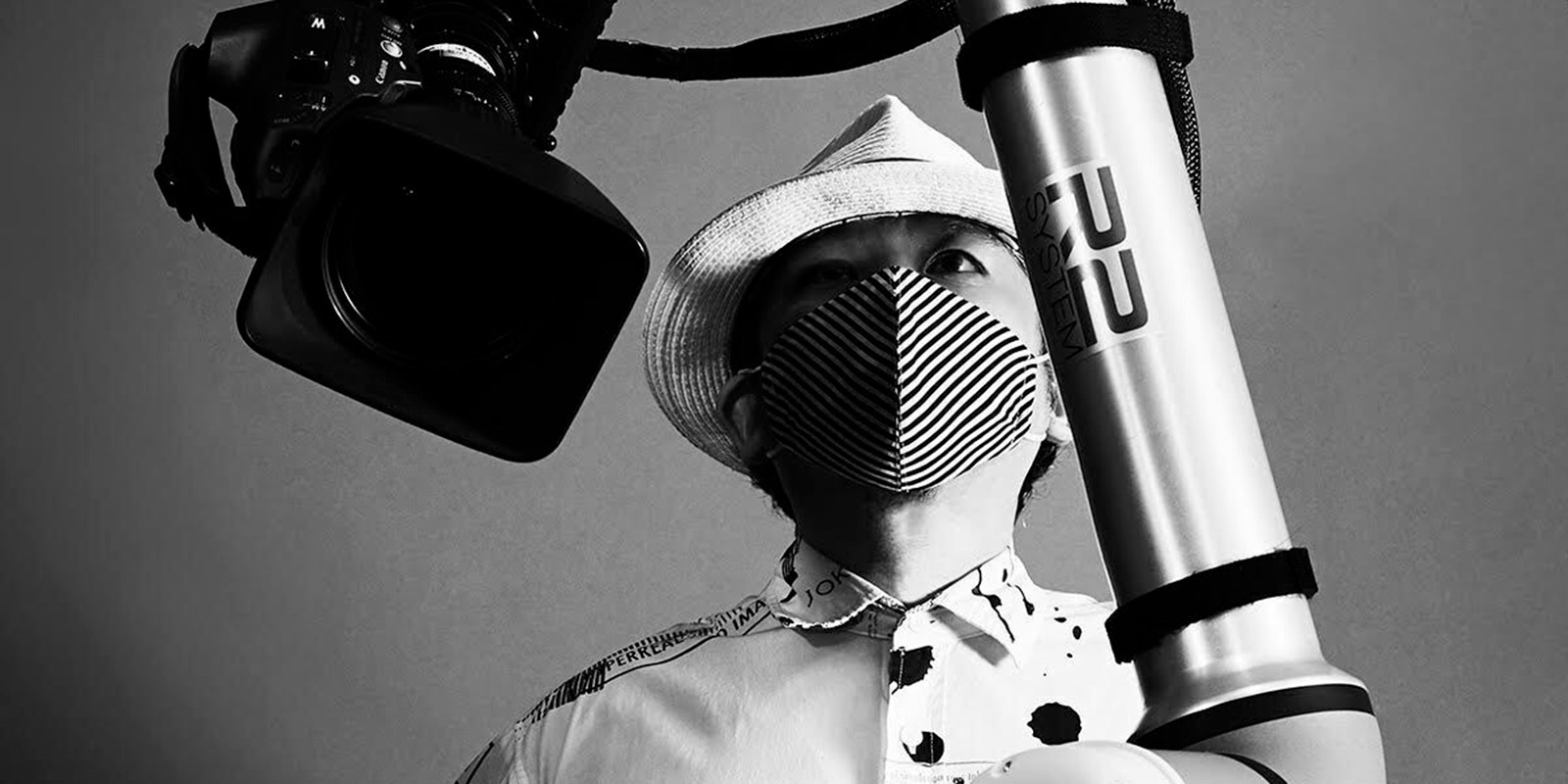Blast from the past
Contemporary artist and filmmaker Naohiro Ukawa talks to Hajime Oishi about his project bringing the sounds of Expo ’70 back to life and reveals his expectations for Expo 2025
The first World Exposition in Japan, Expo ’70, took place over 183 days between March and September in 1970. In the Senri Hills area of Suita, Osaka Prefecture, 77 countries participated under the theme “Progress and Harmony for Mankind.” Along with the 1964 Tokyo Olympics, Expo ’70 is regarded as an epoch-making event.
In February 2020, as the 50th anniversary of the 1970 Osaka Expo approached, an exhibition commemorating the influential event was held in Tokyo. To coincide with that exhibition, Naohiro Ukawa, who curates the livestreaming channel Dommune, released “No Breath/Expo 70 Edition,” an audio artwork based on open-reel tapes that had been used to record the sounds of the Osaka Expo. Ukawa worked with the music critic Koichi Nishi to unearth more than 1,000 of these tapes, digging deep into the auditory memory of the Expo.
“I edited those historic sounds and installed them in a massage chair that ‘rubs your body with the sound of Expo ’70”
“I edited those historic sounds and installed them in a massage chair that ‘rubs your body with the sound of Expo ’70”
Ukawa describes how the Festival Plaza, the main venue of the Osaka Expo, where events such as the opening ceremony were held, was fitted with a huge number of speakers. “Many famous contemporary musicians pondered how to compose music for that space,” he says. Everything that came out of those speakers, as well as the ambient sounds of the plaza, were recorded, but the tapes were stowed away and never played—until Ukawa and Nishi came along. “I found musique concrète and electronic music by the likes of Toshi Ichiyanagi, Kuniharu Akiyama, Takehisa Kosugi, and Shinichi Matsushita,” recalls Ukawa. “For the 50th anniversary exhibition, I edited those historic sounds and installed them in a massage chair that ‘rubs your body with the sound of Expo ’70’.”
 Crowds at Expo ’70 | image courtesy: Osaka Prefectural Government
Crowds at Expo ’70 | image courtesy: Osaka Prefectural Government
As Ukawa’s work makes clear, Expo ’70 featured an all-star cast of contemporary composers, from Japanese greats such as Ichiyanagi to international luminaries including Iannis Xenakis and Karlheinz Stockhausen. But why was such an artistically ambitious program adopted? “The technology of mixing music really evolved in the 1960s, and composing by editing magnetic tapes had only just become a thing,” says Ukawa. “The Expo being a showcase for [advances in] music fitted right in, and every country was pushing its own contemporary musicians.”
Meanwhile, an anti-Expo movement was gripping the Japanese cultural sphere. “People like [graphic designer] Tadanori Yokoo, who were darlings of the times, kept getting asked ‘Aren’t you against the Expo?’,” says Ukawa. “[Artist] Taro Okamoto too, but he decided to participate and use the power of art to blow things up from the inside instead.”
Many of those critical of the Expo questioned its aims. “‘Progress and Harmony’ sounds universal enough, but implicitly it was also a call for increased mass consumption,” says Ukawa. “The Expo led to an increase in foreign tourism and announced to the world that Japan was a developed country. It’s argued that our economy grew so rapidly in part because of the boost provided by the Expo and the Olympics, but there was also a great deal of opposition at the time to the idea of ‘harmony,’ which was taken to mean leaving our originality behind to integrate with the rest of the world.”
“The Expo led to an increase in foreign tourism and announced to the world that Japan was a developed country”
 Expo staff in front of the Tower of the Sun | image courtesy: Osaka Prefectural Government
Expo staff in front of the Tower of the Sun | image courtesy: Osaka Prefectural Government
“The Expo became a hub for cultural experiments. I think that’s one of the most important parts of its legacy”
Ukawa visited the Osaka Expo with his parents when he was a toddler, and has few memories—“I just remember the crowds and being amazed at how many people there were in the world”—but he has experienced its cultural impact directly. “I think gathering all sorts of cutting-edge technology in one place and making it available to the public must have felt thrilling at the time,” he says. “That was also the era of mega-festivals like Woodstock, which took advantage of advances in speaker systems to bring the shared experience of music to the fore. People were experimenting with things like expanded cinema, and the Expo became a hub for such cultural experiments. I think that’s one of the most important parts of its legacy.”
“The Expo became a hub for cultural experiments. I think that’s one of the most important parts of its legacy”
Fifty-five years later, Expo is returning to Osaka, and Ukawa is excited. “In part due to the pandemic, we’re in a time when cyberspace has become the ultimate venue for the avant-garde,” he says. “The physical and virtual worlds are being linked, new realities are being built, and I feel that Expo 2025 will be a groundbreaking step forward in this regard.” He also points to how some aspects of Expo ’70 maintain their relevance today. “I think the pursuit of ‘Progress and Harmony’ will be important this time as well, because new expressions of self-identity beyond the confines of the body are currently being explored in the metaverse.”
 Expo staff in uniform | image courtesy: Osaka Prefectural Government
Expo staff in uniform | image courtesy: Osaka Prefectural Government
“I think that the metaverse is where the true avant-garde will be happening”
Apart from the physical venues—Yumeshima, an artificial island in Osaka Bay—Expo 2025 will also take place in cyberspace, with a digital version of Yumeshima being developed for the world to explore. “I think that the metaverse is where the true avant-garde will be happening,” says Ukawa. “Art and music should once again be utilized to facilitate the cross-border communication that will be going on in the virtual space.” And just like Expo ’70 focused on achieving harmony in the real world, Ukawa thinks Expo 2025 could help establish structure in cyberspace. “As we’ve seen with social media, [the virtual world] is still a lawless zone,” he says. “I think we’ll see order emerge little by little, but the question is how to retain the creative chaos that will keep bursting through without strangling it with [too many] rules. I think that’ll be one of the key questions of Expo 2025.”
Some of the facilities built for Expo ’70 have been preserved in Osaka’s Expo ’70 Commemorative Park, where visitors can also learn about the Expo and its legacy at the Expo ’70 Pavilion museum. The interior of the Tower of the Sun, the Expo’s symbol, is open to the public (reservations recommended).
Senri Banpaku Koen, Suita, Osaka. Opening hours: 9:30 a.m. to 5 p.m. (closed on Wednesdays).
Admission: ¥260 (additional fees apply for the museums and the Japanese garden).
 Naohiro Ukawa | Toshio Ohno
Naohiro Ukawa | Toshio Ohno